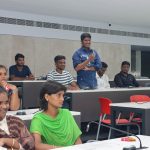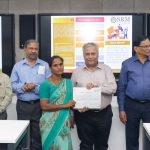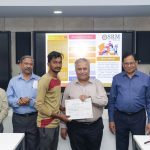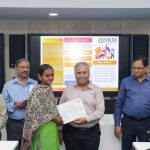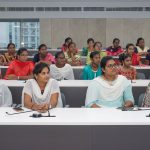15 Lakh investment for Manideep’s Hatchlab venture SPOCSQ Pvt
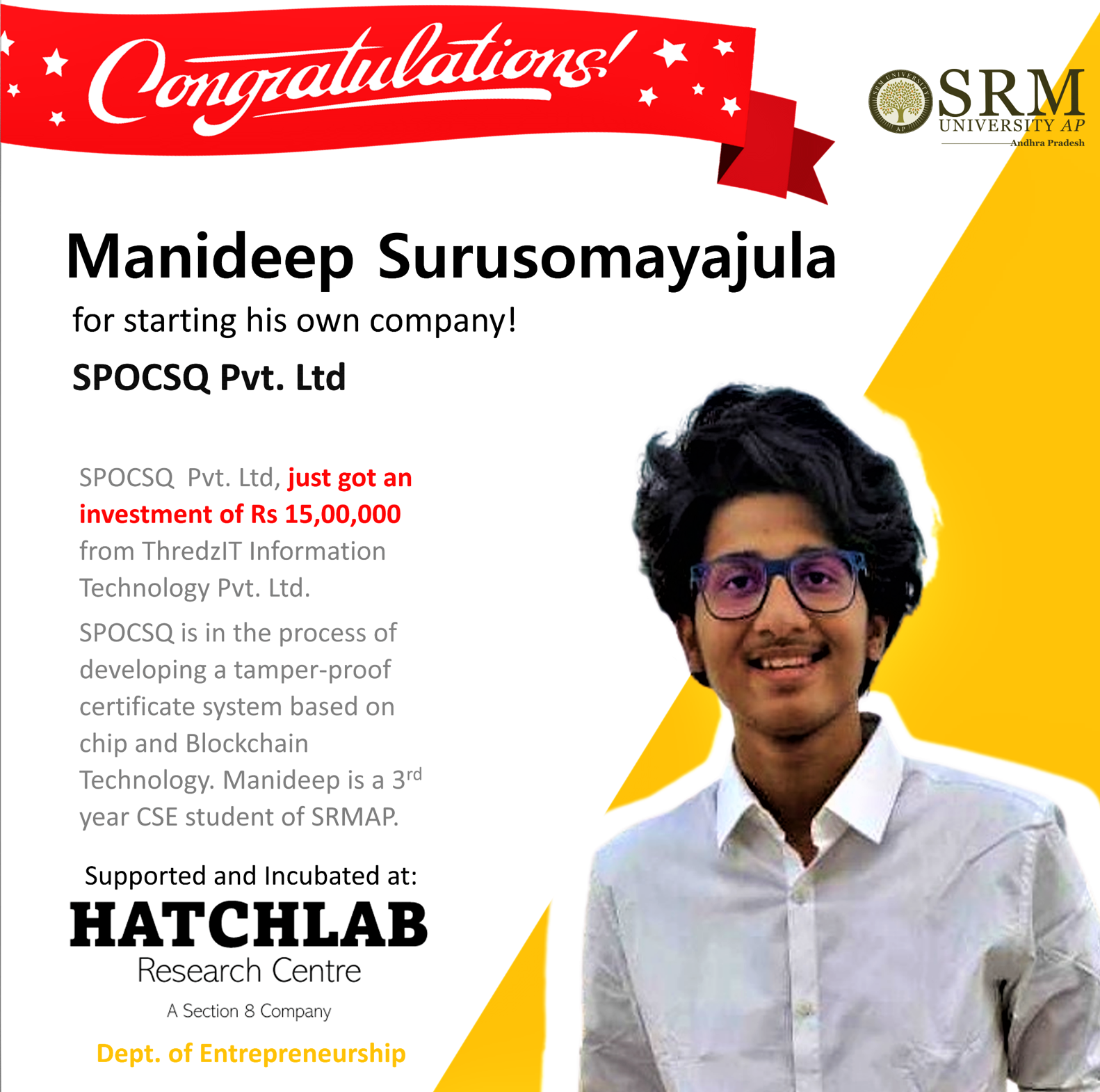 Making an impact on society through revolutionary innovations is not an everyday thing. Manideep Surusomayajula from the Department of Computer Science and Engineering bagged an investment of 15 Lakh for his Hatchlab venture SPOCSQ Pvt. This is the first investment that has been secured by the startup project.
Making an impact on society through revolutionary innovations is not an everyday thing. Manideep Surusomayajula from the Department of Computer Science and Engineering bagged an investment of 15 Lakh for his Hatchlab venture SPOCSQ Pvt. This is the first investment that has been secured by the startup project.
His startup deals with chip-based certification processes using Blockchain Technology. SPOCSQ is in the process of developing a tamper-proof certificate system based on chip and blockchain technology.
The investing company ThredzIT Information Technology Pvt. Ltd is willing to invest 20-30 Lakh for the final version of the product. This achievement is a milestone in Manideep’s career as it demonstrates his passion for entrepreneurship and innovation.
- Published in CSE NEWS, Departmental News, IDEA NEWS, News, Students Achievements
A champion in the making!
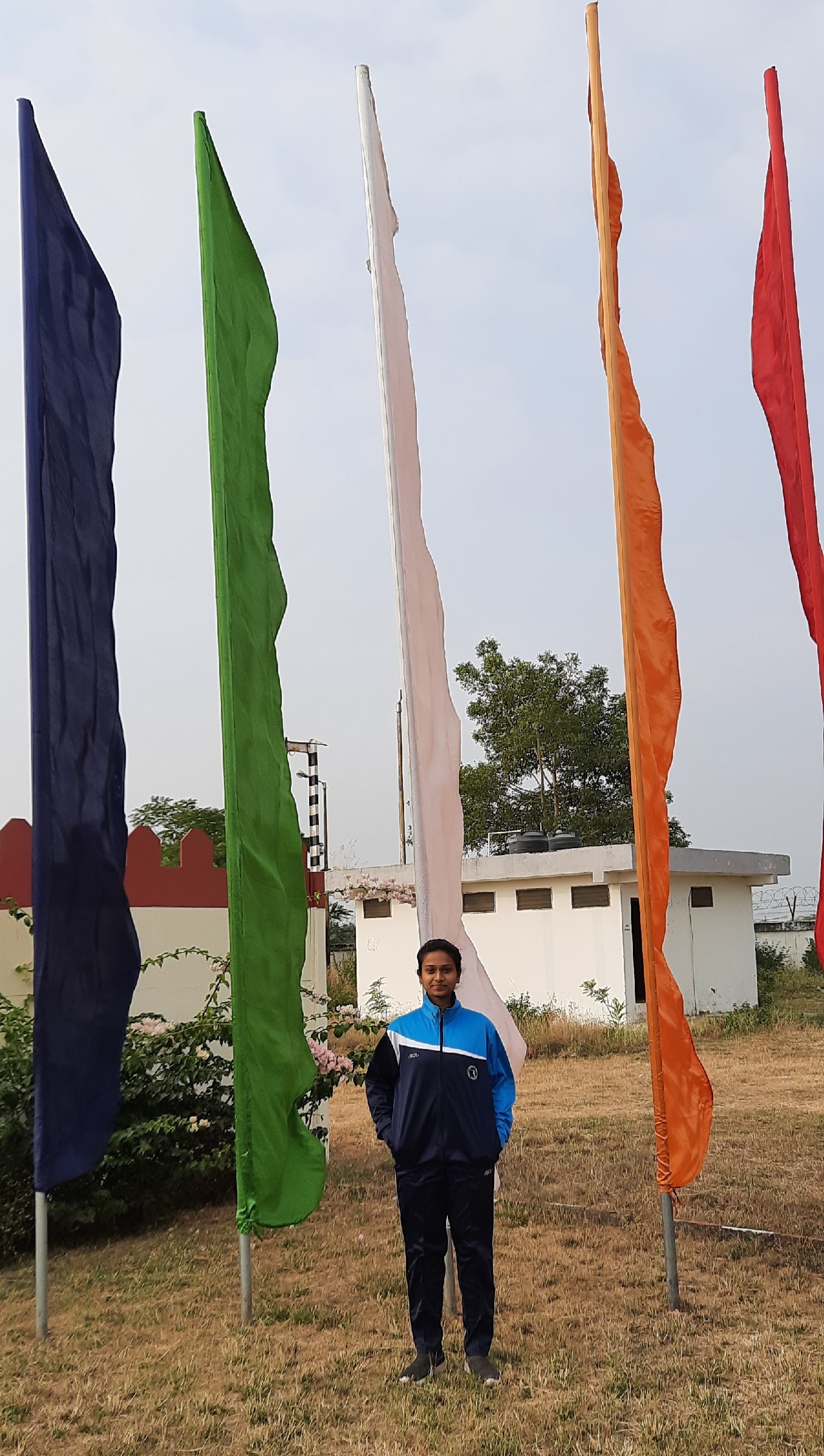
Mastering martial arts is not an easy feat as it demands an exorbitant amount of effort from our physical as well as mental capability. Truly excelling in a martial art form can only be achieved through the manifestation of hardwork, perseverance and unwavering willpower. The Department of Computer Science and Engineering is proud to announce that Ms Bala Ramya Sri Yerramreddy has been selected for the Wushu Championship at the 36th National Games, 2022.
Ms Bala Ramya had previously secured gold at both District and State Level Wushu competitions. Through her journey, she has exhibited strong willpower and dedication to reach these heights. She encourages students to pursue any field of sports or martial arts to attain a peaceful mental constitution as well as physical well-being. Martial arts also equips one with self-defence techniques against physical conflict.
Wushu, an ancient form of hard and soft Chinese martial arts, trains students with superior combat skills for self-defence and promotes sound mental and physical health. One is truly robust only with a healthy balance between well-tuned mind and body.
Her journey to the National Games 2022 representing the state of Andhra Pradesh is awe inspiring and an accomplishment of incredible pride.
- Published in CSE NEWS, Departmental News, News, Sports News, Students Achievements
Youth empowerment and skill development programme concluded
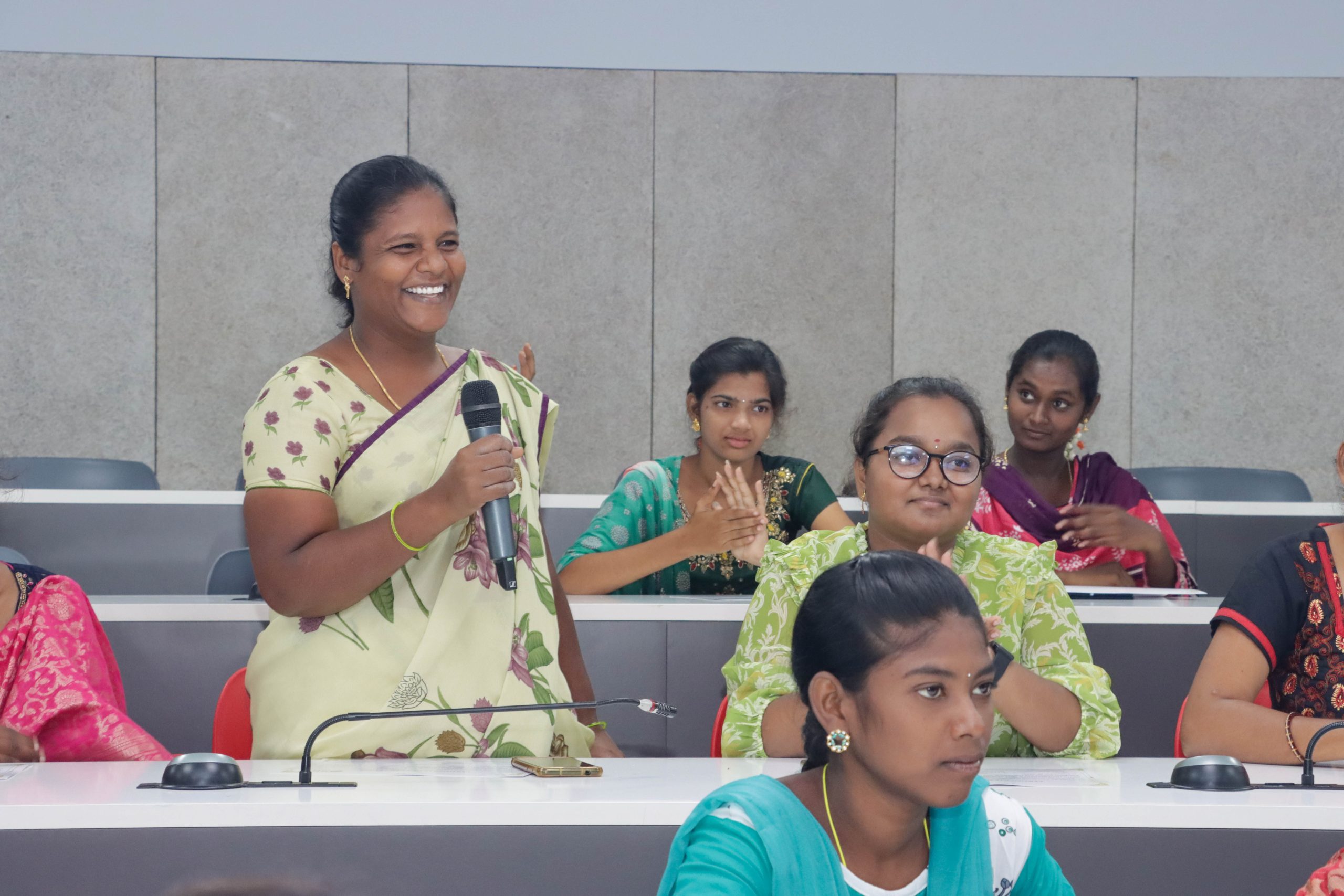
The Department of Computer Science and Engineering at SRM University-AP commenced a one-month-long programme on “Youth Empowerment and Skill Development”. The programme, organised under the ISR activities of the university, was an exclusive initiative for young people living in vicinal rural communities. The sessions aimed to enhance and develop their technical and computing skills to augment their possibilities for a better livelihood.
90 youths were given training on programmes and applications like Microsoft office and Frontend Tools for Web Development. The programme received an overwhelming response from around fifteen neighbouring villages. The young community from the villages; Mangalagiri, Pedavadlapudi, Kaza, Neerukonda, Lemalle, Navuluru, Kuragallu, Velagapudi, Nekkallu, Chiraravuru, Kanteru, Pedaparimi, Yerrabalem, Mandadam, and Sibiram; participated in the training programme.
Assistant Professors of the Department of Computer Science and Engineering, Dr Dinesh Reddy and Dr Mahesh Kumar, were the chief resource persons for the programme. Classes were held from August 29, 2022, to September 28, 2022, at the university premises. The valedictory function was conducted on October 13, and certificates were issued to the participants who had successfully completed the programme. Prof Manoj K Arora, Vice-Chancellor and Prof T Ragunathan, Associate Dean-in-Charge (Engineering) – School of Engineering and Sciences, were also present on the occasion.
- Published in CSE NEWS, Departmental News, News
AKAP-IoV: Facilitating an intelligent transportation infrastructure
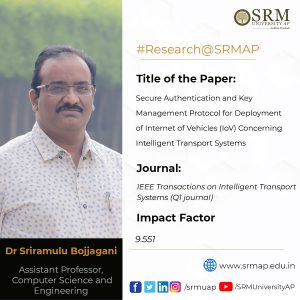 Intelligent transport systems embedded with latest technology is the future of automotive industry and can revolutionise the very infrastructure and architecture of transportation. The principles of intelligent transportation systems have manifested in the development of Internet of vehicles (IoV), a novel technological network that enables autonomous and connected mobile commutation facility. Dr Sriramulu Bojjagani, Assistant Professor, Department of Computer Science and Engineering, has published a paper on this seminal topic titled “Secure Authentication and Key Management Protocol for Deployment of Internet of Vehicles (IoV) Concerning Intelligent Transport Systems” in the prestigious journal, IEEE Transactions on Intelligent Transport Systems (Q1 journal) having an Impact factor of 9.551. The paper highlights the development and significance of the pioneering AKAP-IoV system in successfully tackling cyber threats and security vulnerabilities.
Intelligent transport systems embedded with latest technology is the future of automotive industry and can revolutionise the very infrastructure and architecture of transportation. The principles of intelligent transportation systems have manifested in the development of Internet of vehicles (IoV), a novel technological network that enables autonomous and connected mobile commutation facility. Dr Sriramulu Bojjagani, Assistant Professor, Department of Computer Science and Engineering, has published a paper on this seminal topic titled “Secure Authentication and Key Management Protocol for Deployment of Internet of Vehicles (IoV) Concerning Intelligent Transport Systems” in the prestigious journal, IEEE Transactions on Intelligent Transport Systems (Q1 journal) having an Impact factor of 9.551. The paper highlights the development and significance of the pioneering AKAP-IoV system in successfully tackling cyber threats and security vulnerabilities.
Abstract
Intelligent transport systems amalgamated with advanced technologies are an important element of the automotive industry, including critical infrastructure and transportation. Internet of Vehicles (IoV) is the modern technological framework designed for intelligent transportation. IoV creates a network of information relations among vehicles, thus contributing to reduced congestion, roadside infrastructure, driver/traveller safety, and traffic efficiency through wireless communication and sensing technology. However, a significant challenge in IoV applications is security, as criminals could potentially exploit these applications. Despite increasing industry awareness, the potential danger posed by security vulnerabilities and cyber threats remains high. In this study, we have designed a new system called AKAP-IoV, which supports secure communication, mutual authentication, and key management among vehicles, roadside units, and fog and cloud servers. AKAP-IoV was tested and verified using Scyther and Tamarin to ensure its resistance to cyber threats. Furthermore, we conducted a formal security analysis using the Real-or-Random (RoR) oracle model to assess security properties logically. In addition, a detailed, comprehensive comparative study was considered to evaluate the performance, functionality, efficiency, and security features supported by AKAP-IoV compared to those of recently developed schemes.
- Published in CSE NEWS, Departmental News, News, Research News
Exploring the Potential of an Image Description Generator
An Image caption generator system implies the detection of the image as well as producing the caption with natural language processing by the computer. This is a tedious job. Image caption generator systems can solve various problems, such as self-driving cars, aiding the blind, etc.
The recent research at the Department of Computer Science and Engineering proposes a model to generate the captions for an image using ResNet and Long Short-Term Memory. Assistant Professors Dr Morampudi Mahesh Kumar and Dr V Dinesh Reddy have published the paper Image Description Generator using Residual Neural Network and Long-Short-Term Memory in the Computer Science Journal of Moldova with an impact factor of 0.43.
The captions or descriptions for an image are generated from an inverse dictionary formed during the model’s training. Automatic image description generation is helpful in various fields like picture cataloguing, blind persons, social media, and various natural language processing applications.
Despite the numerous enhancements in image description generators, there is always a scope for development. Taking advantage of the larger unsupervised data or weakly supervised methods is a challenge to explore in this area, and this is already there among the future plan of the researchers. Another major challenge could be generating summaries or descriptions for short videos. This research work can also be extended to other sets of natural languages apart from English.
Abstract
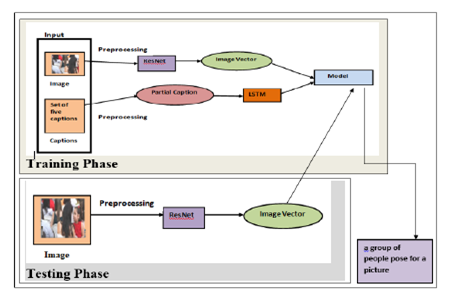 Human beings can describe scenarios and objects in a picture through vision easily, whereas performing the same task with a computer is a complicated one. Generating captions for the objects of an image helps everyone to understand the scenario of the image in a better way. Instinctively describing the content of an image requires the apprehension of computer vision as well as natural language processing. This task has gained huge popularity in the field of technology, and there is a lot of research work being carried out. Recent works have been successful in identifying objects in the image but are facing many challenges in generating captions to the given image accurately by understanding the scenario. To address this challenge, we propose a model to generate the caption for an image. Residual Neural Network (ResNet) is used to extract the features from an image. These features are converted into a vector of size 2048. The caption generation for the image is obtained with Long Short-Term Memory (LSTM). The proposed model was experimented with on the Flickr8K dataset and obtained an accuracy of 88.4%. The experimental results indicate that our model produces appropriate captions compared to the state of art models.
Human beings can describe scenarios and objects in a picture through vision easily, whereas performing the same task with a computer is a complicated one. Generating captions for the objects of an image helps everyone to understand the scenario of the image in a better way. Instinctively describing the content of an image requires the apprehension of computer vision as well as natural language processing. This task has gained huge popularity in the field of technology, and there is a lot of research work being carried out. Recent works have been successful in identifying objects in the image but are facing many challenges in generating captions to the given image accurately by understanding the scenario. To address this challenge, we propose a model to generate the caption for an image. Residual Neural Network (ResNet) is used to extract the features from an image. These features are converted into a vector of size 2048. The caption generation for the image is obtained with Long Short-Term Memory (LSTM). The proposed model was experimented with on the Flickr8K dataset and obtained an accuracy of 88.4%. The experimental results indicate that our model produces appropriate captions compared to the state of art models.
- Published in CSE NEWS, Departmental News, News, Research News
Boosting Transitive Communication in Large-scale IoT Networks
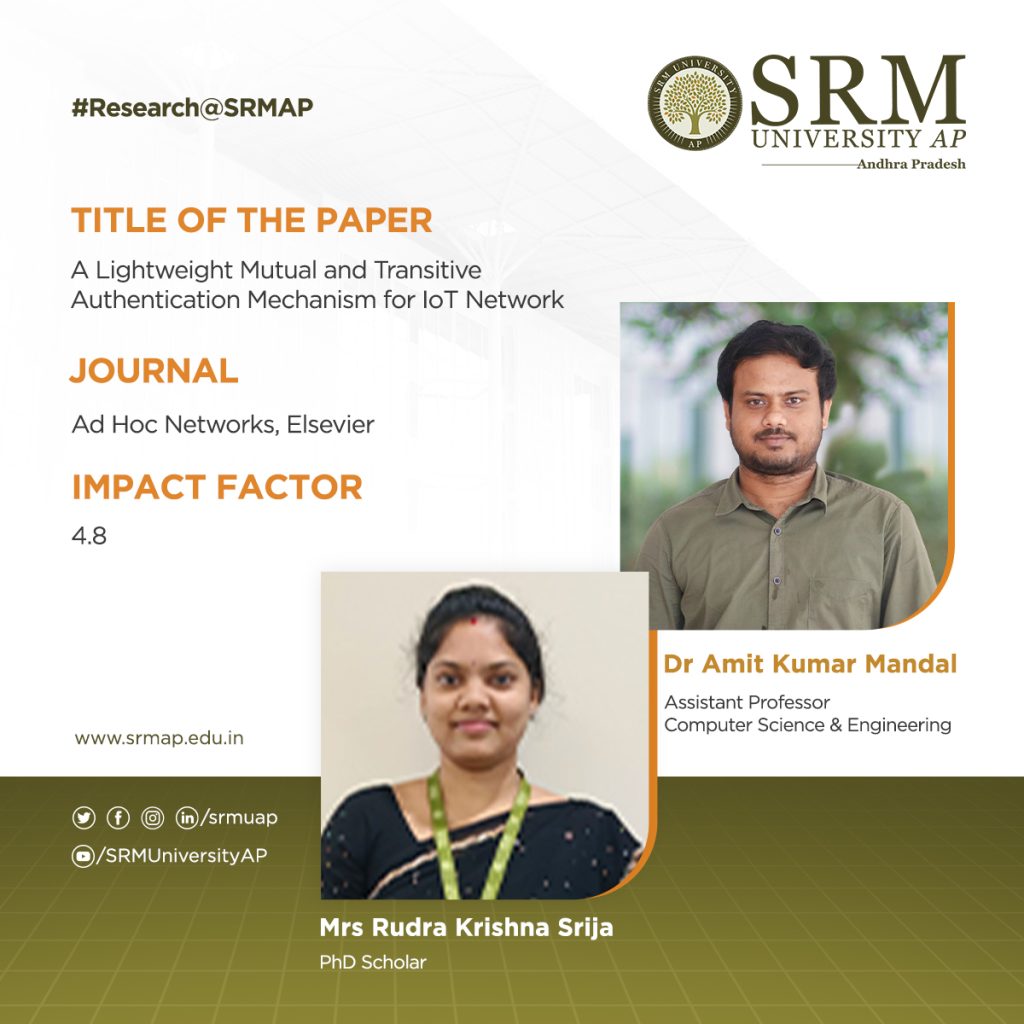
Complex IoT networks comprise multiple devices connected to the gateway. A smoother functioning is ensured through new techniques for device authentication to the gateway. On this note, the research paper titled “A Lightweight Mutual and Transitive Authentication Mechanism for IoT Network” has been published by Dr Amit Kumar Mandal, Assistant Professor, Department of Computer Science and Engineering and his research scholar Mrs Rudra Krishna Srija in the Q1 Journal Ad Hoc Networks, Elsevier having an impact factor of 4.8. The research details the use of the polynomial-based protocol in enhancing device connection for transitive communication.
Abstract of the paper
In large and complex IoT systems like the smart city or smart industry which consist of thousands of connected devices, it may not always be feasible to be directly connected to the gateway but it may be possible to be connected to another device. Therefore, already authenticated devices should facilitate the new device’s authentication by the gateway. To address this issue, the existing protocols use multiple authentication protocols based on different cryptography techniques, which are difficult to implement and manage in resource-constrained IoT devices. In this paper, we propose a Transitive device authentication protocol based on the Chebyshev polynomial.
The work is primarily aimed at improving transitive communication in machine-to-machine communication or device-to-device communication in large-scale heterogeneous IoT network scenarios. The research team targets to investigate the benefits of adopting the designed protocol in particular within low-power and lossy networks in the future.
Collaborations
Università Ca Foscari Venezia, Venice, Italy
- Published in CSE NEWS, Departmental News, News, Research News
Patent Filed for Person Identification System and Method
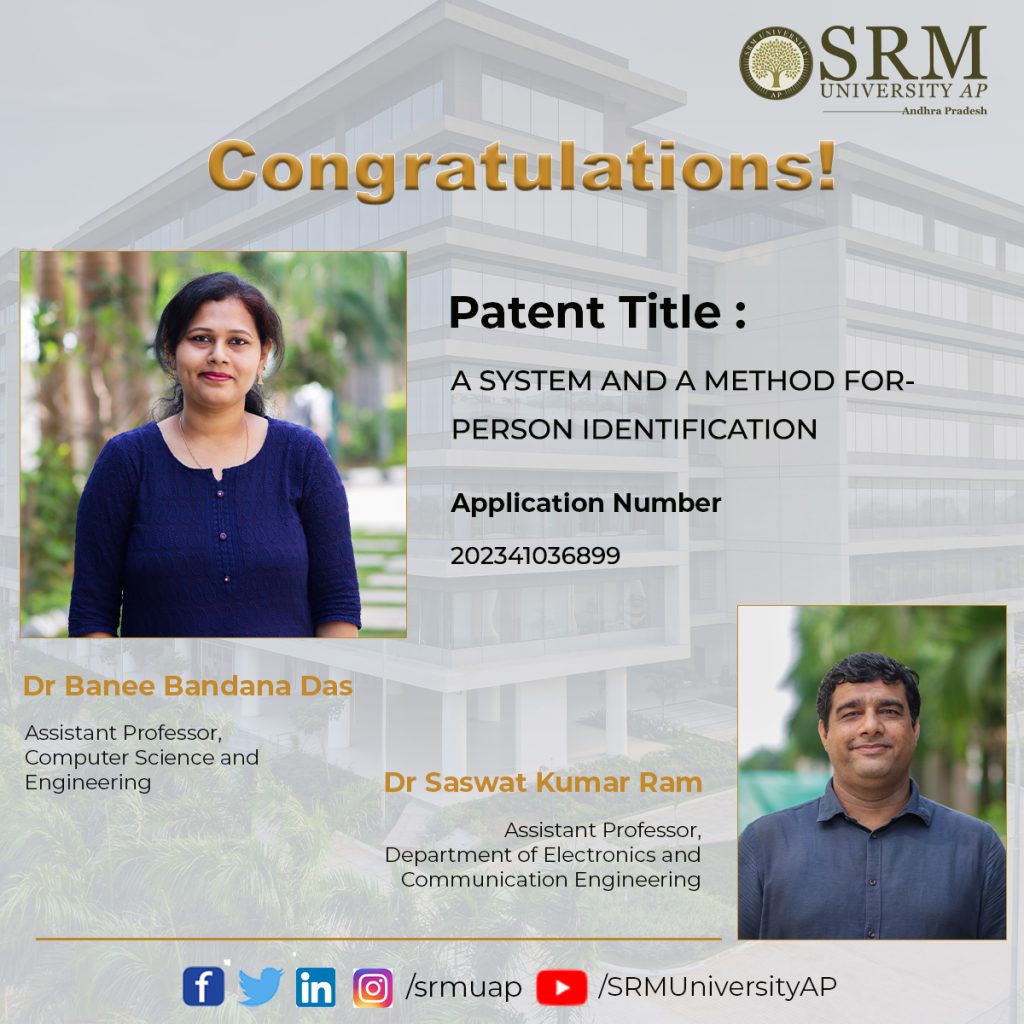
Today, biometric systems are widely used across all major domains, but alarmingly these systems are vulnerable to various security attacks. However, Dr Banee Bandana Das and Dr Saswat Kumar Ram, Assistant Professors at the Department of Computer Science and Engineering, SRM University-AP, have jointly come up with a solution that is more efficient and robust. The faculty duo have also filed and published the patent titled- “A System and A Method For Person Identification” with Application Number: 202341036899.
Abstract
Biometric representation of humans deal with tasks such as identification and verification. It can be done through various methods like fingerprint, face, retina, voice, etc. However, existing biometric systems are vulnerable to various security attacks. EEG-based biometrics are putting forward solutions because of their high-safety capabilities and handy transportable instruments. Motor imagery EEG (MI-EEG) is a broadly centred EEG signal exhibiting a subject’s motion intentions without actual actions. This invention proposes an unsupervised framework for feature learning based on autoencoders. It learns sparse feature representations for EEG-based person identification. Autoencoder-CNN exhibits the person identification task for signal reconstruction and recognition. The framework proved to be a practical approach in managing the massive volume of EEG data and identifying the person based on their different tasks in resting state. The experiments have been conducted on the standard publicly available Motor imagery EEG dataset with 109 subjects. This invention proposes an unsupervised framework for feature learning based on autoencoder to learn sparse feature representations for EEG-based person identification. Autoencoder and CNN do the person identification task for signal reconstruction and recognition. The outcomes imply that the implementation of an autoencoder-CNN architecture for person identification was intensely successful with improved recognition performance with the most notable autoencoder architecture. Eye open and closed resting state data as training data is used while four different motor imagery tasks have been considered test data in this biometric model. Training and testing of different state data of the same person have been proved to be the most robust and versatile EEG-based biometric system.
Practical Implementation of the Research
The present invention can be used in smart city applications, considering that the population of cities is increasing by the day, in which case, the security and privacy of people are at high risk in all sectors. The application of this technology will be in areas like:
Smart Office
The workflow and working efficiency of the employees can be enhanced with various innovative features and technology in an intelligent environment like smart offices of smart cities. Biometric-based methods involving fingerprints, retina, voice, and face recognition for secure authentication and identification of employees, clients, and different types of machinery are helpful. Various security attacks are the most severe issue related to these methods. Brain signals (EEG) are more secure and difficult to copy and steal, efficiently used for security needs and authentication.
Smart Healthcare
The laboratory and the data related to the health sectors are always important. The privacy and restricted access are must to secure it. By using the proposed invented model, the security can be enhanced as compared to the traditional biometric traits.
Smart Defence
The use of biometric in defence is not discussed in public but is undoubtedly an essential parameter in this domain. Many countries rely on biometric data like faces, irises, fingerprints, etc., for identification. A unique and trusted database is a must in defence for identifying persons involved in various operations. These include authenticating scientists, pilots, engineers etc., and to identify criminals in specific places. EEG-based person identification can be a secure alternative in this domain.
As a future prospect, Dr Das and Dr Ram are planning to develop a more secure and reliable biometric authentication system that will be based on Multimodal Techniques using Machine learning Methods.


- Published in CSE NEWS, Faculty Achievements, News, Research News


